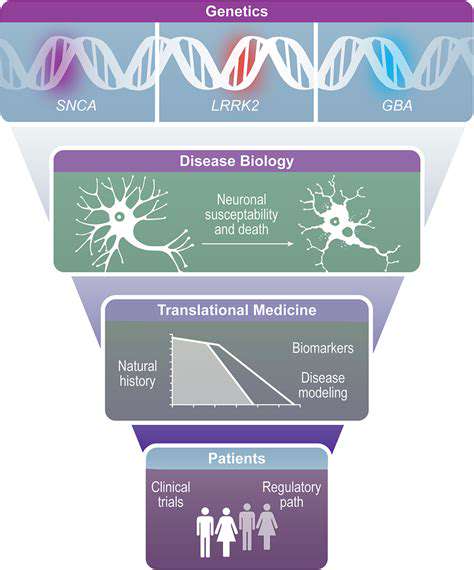Understanding Different Types of Pet Tumors
Benign Tumors
When we talk about growths in pets, benign tumors are often the first to come to mind. Unlike their malignant counterparts, these growths don't invade surrounding tissues or spread throughout the body. They typically remain confined to their original location, often encased in a protective membrane. While generally not life-threatening, they can still create significant issues depending on their size and position. A large benign tumor near the windpipe might make breathing difficult, while one pressing against the spinal cord could lead to neurological symptoms. Regular veterinary check-ups become crucial in these cases, as early detection allows for better management.
Many pet owners first learn about their animal's benign tumor during routine examinations or when unusual symptoms appear. Treatment decisions depend on various factors - if the growth causes discomfort or shows signs of potential malignancy, surgical removal might be recommended. Veterinarians carefully evaluate each case individually, considering the pet's overall health and quality of life.
Malignant Tumors
Cancerous growths present a more serious challenge in veterinary medicine. These aggressive tumors don't respect tissue boundaries and can spread through the body via metastasis, creating new tumors in distant locations. This ability to invade and spread defines their dangerous nature and significantly impacts treatment options and outcomes. Malignant tumors can originate from virtually any tissue type, resulting in diverse symptoms and requiring customized treatment approaches.
Recognizing warning signs early makes a tremendous difference in outcomes. Pet owners should watch for unexplained weight loss, decreased energy levels, changes in eating habits, unusual lumps, or alterations in bathroom routines. Difficulty breathing or swallowing also warrants immediate veterinary attention. The sooner these symptoms are addressed, the better the chances of successful management.
Lymphoma
This particular cancer affects the lymphatic system, a vital component of the immune defense network. Lymphoma's behavior varies widely - some forms progress slowly while others advance rapidly. The disease manifests in several distinct types, each with unique characteristics and treatment responses. Early intervention dramatically improves outcomes, making regular veterinary visits essential for pets at risk.
Mast Cell Tumors
Common in both dogs and cats, these growths originate from immune system components called mast cells. The behavior spectrum ranges from relatively harmless to extremely aggressive. Veterinarians assess multiple factors when evaluating these tumors: location, dimensions, appearance, and other clinical findings all contribute to treatment decisions. The animal's breed, age, and general health status also play significant roles in determining the best approach.
Tumor Types Based on Cell Origin: A Deeper Dive

Carcinomas
As the most frequently diagnosed cancers, carcinomas develop from epithelial cells that form protective linings throughout the body. These cellular barriers shield organs from external threats while facilitating essential material transport. Treatment strategies vary significantly depending on the carcinoma's location - breast, lung, or colon cancers each require specialized approaches. Epithelial cells create protective layers in numerous systems, including the skin, respiratory tract, and digestive system.
Modern oncology recognizes that different carcinomas possess distinct molecular signatures that influence treatment responses. This understanding has led to targeted therapies that specifically disrupt cancerous pathways, often yielding better results than traditional treatments.
Sarcomas
Originating from connective tissues like bone, muscle, and fat, sarcomas provide structural challenges in veterinary oncology. While less common than carcinomas, their aggressive nature and complex treatment requirements make them particularly difficult cases. The wide variety of connective tissue sources creates a diverse group of sarcoma types, each with unique clinical presentations.
The heterogeneity of connective tissues involved means treatment plans must be carefully customized. Accurate classification proves essential for optimal therapeutic outcomes.
Leukemias
These cancers begin in the bone marrow's blood-forming cells, disrupting normal blood cell production. Abnormal proliferation of these cells floods the bloodstream with dysfunctional white blood cells, compromising immune function and overall health. The resulting symptoms and complications vary depending on the specific blood cell line affected.
Classification depends on both the affected cell type and disease progression speed. Early diagnosis and intervention significantly improve prognosis, though treatment approaches must be tailored to the leukemia's specific characteristics.
Lymphomas
Affecting the immune system's lymphatic components, lymphomas target infection-fighting lymphocytes. These white blood cells normally defend against pathogens, but cancerous transformations impair their functionality. Lymphomas may develop in various lymphatic structures, including lymph nodes and spleen, with location influencing disease presentation.
Treatment response varies considerably among lymphoma subtypes, necessitating personalized therapeutic strategies. This variability underscores the importance of accurate diagnosis and customized care plans.
Neuroendocrine Tumors
These unique growths arise from cells combining neural and hormonal functions, found throughout multiple organ systems. Their hormone-secreting capacity often produces distinctive symptoms based on which hormones are involved. Growth rates can vary from indolent to aggressive, with location and hormone profile significantly impacting treatment decisions.
Despite often slow progression, potential for aggressive spread requires vigilant monitoring. Optimal outcomes depend on early detection and carefully planned management strategies that account for the tumor's dual nature.
Diagnostic Procedures and Treatment Options
Diagnostic Procedures for Pet Tumors
Veterinarians begin tumor evaluations with comprehensive physical examinations, carefully palpating for abnormal masses while assessing overall health status. Detailed medical histories provide crucial context, including breed predispositions, age-related risks, and recent behavioral changes. Blood work helps identify systemic abnormalities that might influence diagnosis or treatment.
Advanced imaging techniques like radiographs, ultrasound, and CT scans provide detailed visualizations of tumor characteristics. These tools help determine size, location, and potential spread - critical factors for treatment planning.
Tumor Biopsy and Histopathology
Definitive diagnosis typically requires tissue sampling through biopsy procedures. Veterinary pathologists microscopically examine these samples, determining tumor type, aggressiveness, and cellular origins. This detailed analysis forms the foundation for all subsequent treatment decisions and prognostic assessments.
Treatment Options for Benign Tumors
Surgical excision remains the gold standard for problematic benign growths, with technique selection based on tumor characteristics. For non-threatening cases, careful monitoring through regular veterinary exams may be appropriate, watching for any concerning changes.
Treatment Options for Malignant Tumors
Malignant cases often require multimodal approaches combining surgery with chemotherapy or radiation. Treatment plans consider tumor type, stage, and the patient's overall condition, balancing aggression against quality of life considerations.
Alternative and Complementary Therapies
Some owners explore adjunctive treatments like acupuncture or nutritional supplements alongside conventional care. These should always be discussed with veterinarians to ensure compatibility with primary treatments and avoid potential interactions.
Prognosis and Follow-up Care
Outcomes depend on multiple factors including tumor biology and treatment response. Ongoing monitoring through regular check-ups helps detect recurrences early and manage any long-term treatment effects, ensuring optimal quality of life throughout the pet's recovery journey.
Read more about Understanding Different Types of Pet Tumors
Hot Recommendations
- Customized Sleep Schedules: AI Driven for Sustainable Rest
- Crafting a Personalized Productivity Plan for Mental Clarity
- Sustainable Self Compassion: Cultivating Kindness Towards Your Mind
- Sustainable Productivity Hacks for the Busy Professional
- Sustainable Wellness for Parents: Balancing Family and Self Care
- Data Informed Self Care: Designing Your Personalized Wellness Strategy
- Sustainable Wellness for a Purpose Driven Life
- AI Assisted Mindfulness: Personalized Meditations for Deeper Practice
- Building Inclusive Mental Health Services: Key Initiatives
- AI Powered Self Care: Customizing Your Routine for Maximum Impact











